[[post.title]]
We're changing for you!
Check out our new website
We're changing for you!
Check out our new website
Oct 3, 2025
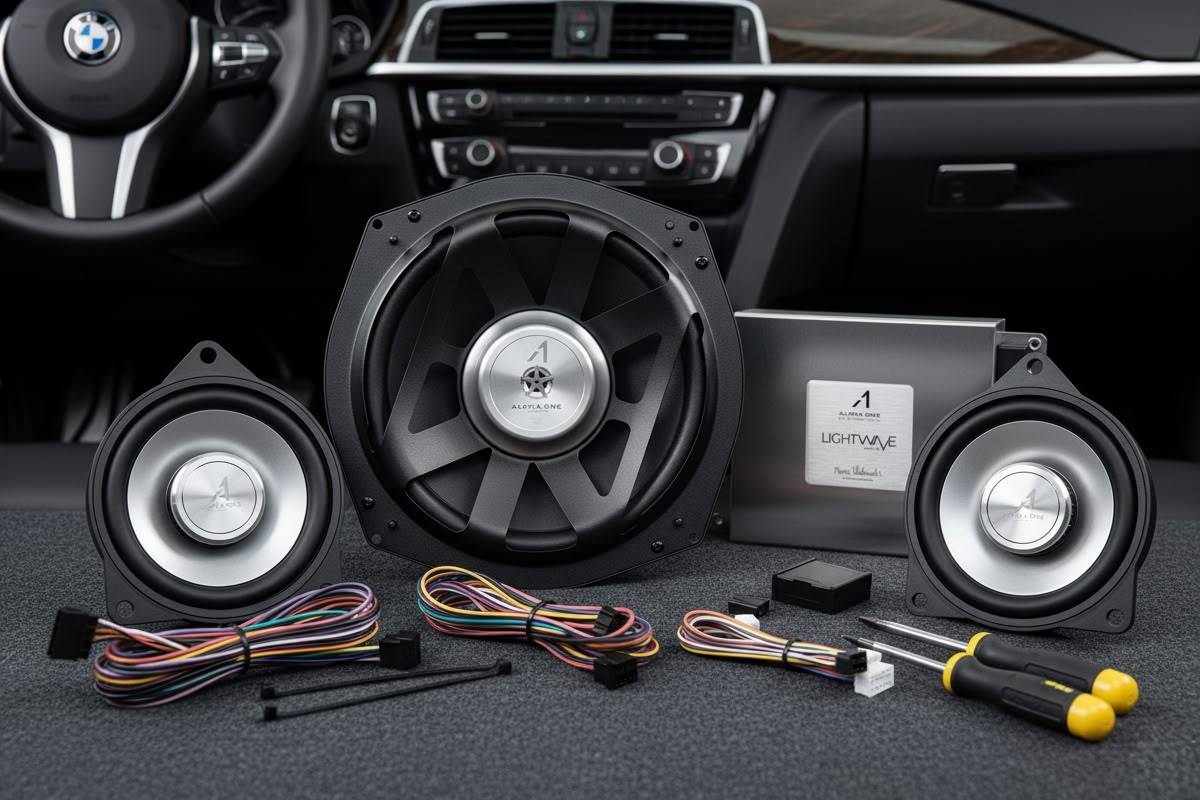
The Ultimate Driving Machine means not only comfy seats and taking corners at faster-than-sensible speeds. One of the top creature comforts in any vehicle is the audio system. BMW has made some bangers (no pun intended) and some stinkers over the years, but what actually is a sound system itself?
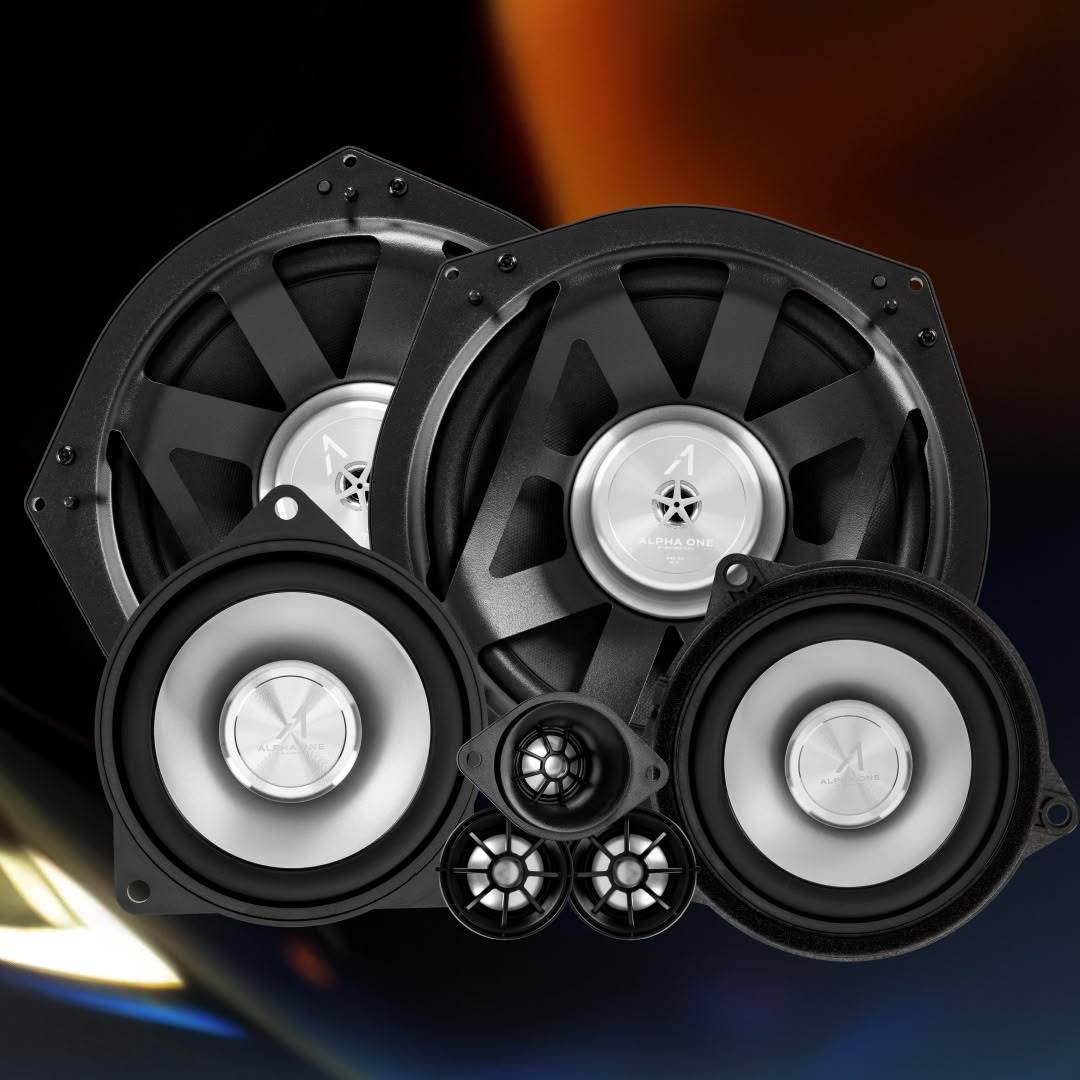
A BMW sound system is more than just speakers.
Apart from them, you also have amps, speaker placement, tuning, and so much more that makes (or breaks) how well a given car audio setup works. Today, we’ll take a deep dive into what makes up a BMW sound system and how you can consider upgrading it, should you choose to go that route. Let’s get started!
Let’s start off with something simple and talk about the actual components of a sound system.
While we can get VERY involved with scientific terms, we’ll try to keep it a little more basic for now and work our way up. Let’s cover the signal flow of the audio system. The signal flow is the path audio takes from the source you play it from to your ears. What are the exact stages of this flow?
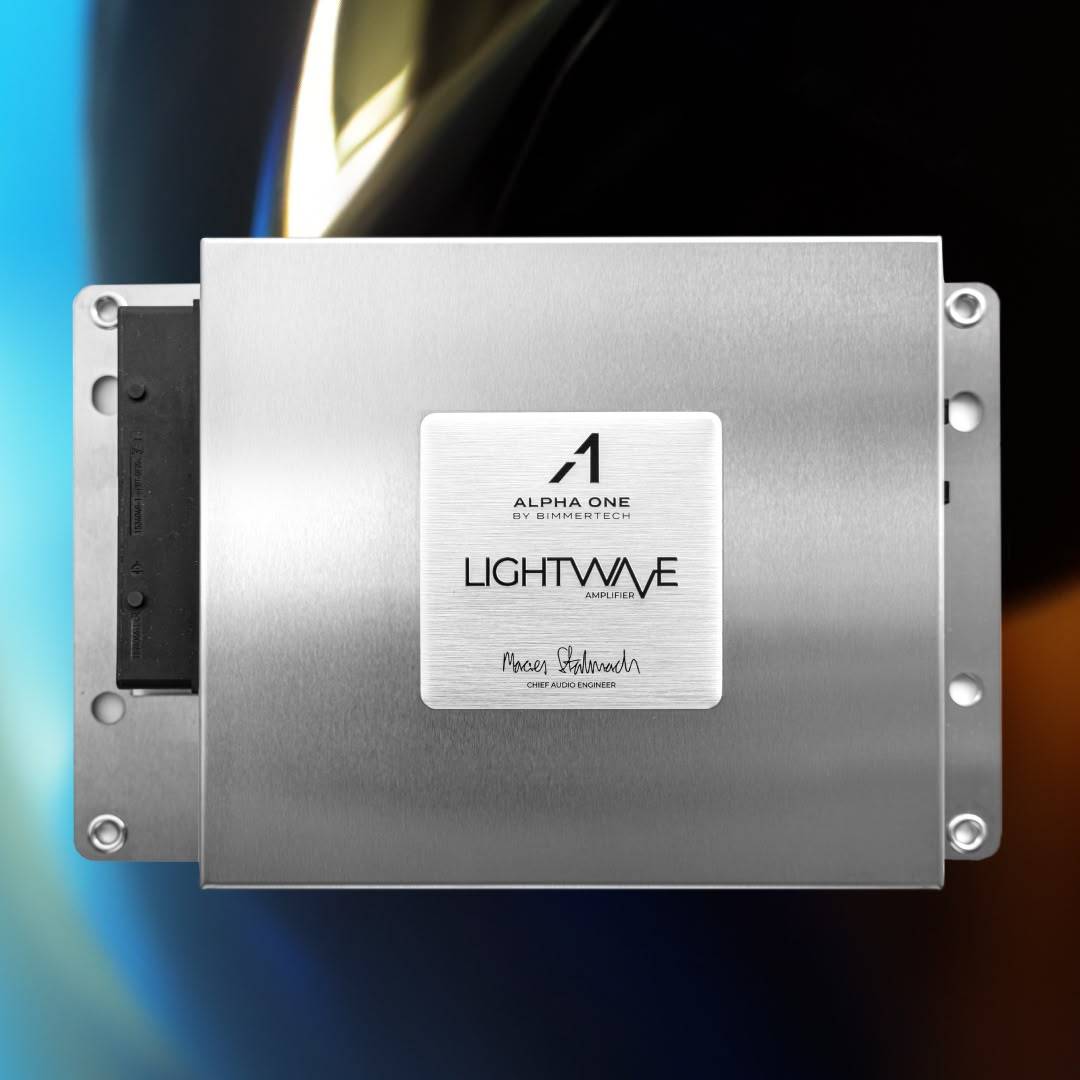 Processor and Amplifier
Processor and Amplifier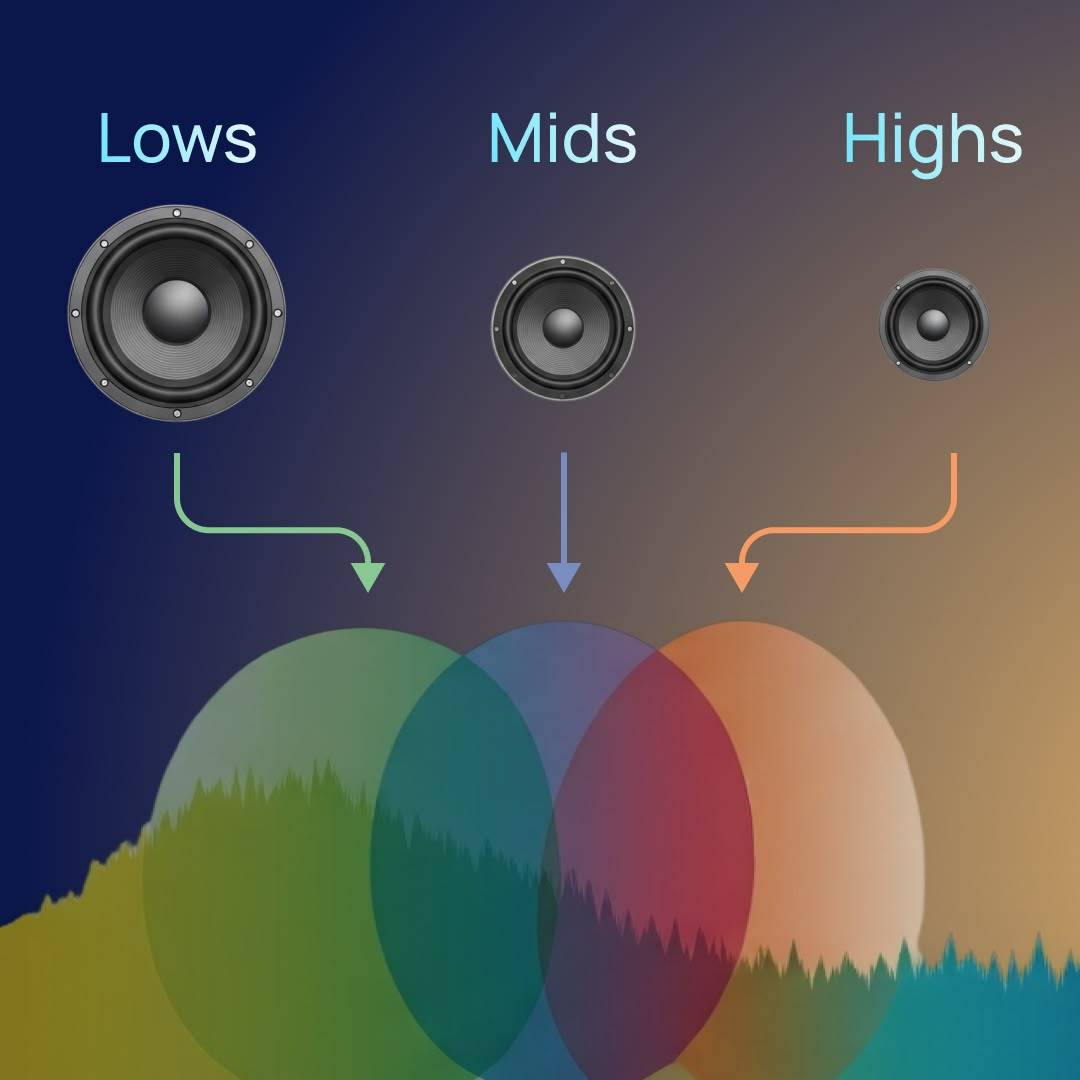 Speakers
Speakers Here’s a quick breakdown on which speakers are responsible for which frequencies:
And a little fun fact for you!
The longer the wavelength, the less you could tell where it’s coming from. Additionally, shorter wavelengths are subject to more absorption in the air, while longer sound waves penetrate barriers much better. This is why if a car next to you in traffic has a lot of bass, that is what you mostly hear. Or when lightning strikes far away, you hear a low rumble of thunder.
Yes. Moving on…
—
Okay, okay! All jokes aside, the quality of the components and materials that go into the speakers, amp, and wiring all make a very big difference. Generally speaking, if you have an expensive and powerful amp and low cost speakers, the speakers will not be able to keep up with it and sound distorted. Eventually, they may even blow, meaning a speaker coil could be thrown out of alignment, the coil could overheat, or the speaker could move too much outside of its specified working range resulting in damage.
On the flip side, if you have expensive and well made speakers and a wimpy amp, they may be able to shape the sound better, but the amp will never be able to drive them to their potential. It’s a waste of potential, and furthermore, an underpowered amp will distort/clip the sound at the end of its power-handling abilities. So, in short, you generally do get what you pay for!
What is impedance in simple terms? It’s resistance in the function of frequency. Why does it matter? The short answer is you want to have speaker impedance be inline with the amplifier’s load handling capability. And we can leave it at that. If you’re interested in some more information on the matter though:
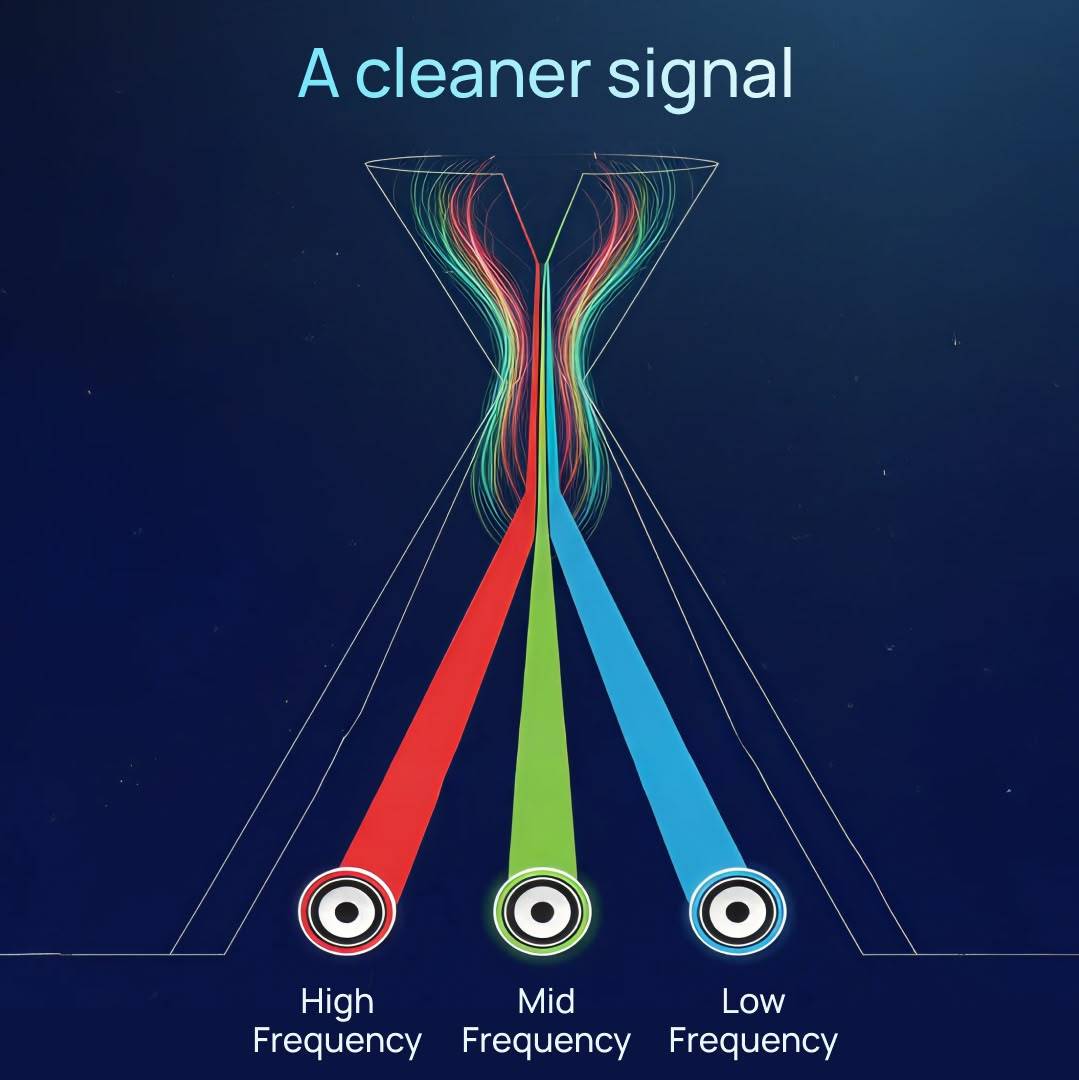
Most multichannel car audio amplifiers are rated to handle loads of 2 to 4 ohms and similarly most speakers used in cars are 2 or 4 ohms. In higher end BMW audio systems however it is the norm to find 8ohm under seat woofers. For example most Harman Kardon branded BMW audio systems use 8ohm rated woofers. When you upgrade such a system with an Alpha One Amplifier we can re-tune the system to get the most out of it however our amp isn’t rated at 8ohms. While it will have no problem driving an 8ohm woofer, it would be better suited driving a 4ohm woofer. The reason is it’s generally twice as easy for our amp to output power at 4ohms as it is at 8ohms. That’s why you’ll see us recommend 4ohm woofers instead of the factory impedance woofers once upgrading.
If you were to skip an amplifier upgrade and only pull the trigger on speaker upgrades (we recommend going with the amp first as it’s the best bang for your buck) we would stick to near factory impedance woofers – because your factory amplifier wouldn’t be happy with the extra load of lower impedance woofers. They would play louder under the factory amp, skewing the frequency response towards bass but only to the point where the factory amp would start distorting and likely kicking into protection mode way sooner than it should.
Midrange and tweeters in BMW’s have always been rated at 4ohms so there is nothing to worry about there. Our Alpha One upgrade midrange and tweeter speakers always closely follow the factory impedance, which has served us well as late model BMW’s with various levels of self-driving capabilities do check speaker load for non-normal conditions to be sure the audio system can inform the driver of a safety concern on the road. Some of our competitors speakers don’t follow the factory impedance and cause your self driving features to become unavailable throwing a code.
Now that you know the basics about the components of a sound system, you may be asking “how many speakers do I need and where do I want them?”. Let’s face it… In a car, you’re a bit more limited in how many and where you can put them. Without getting too crazy with modified parts, a trunk sub/external subwoofer is really the only thing you have more options with.
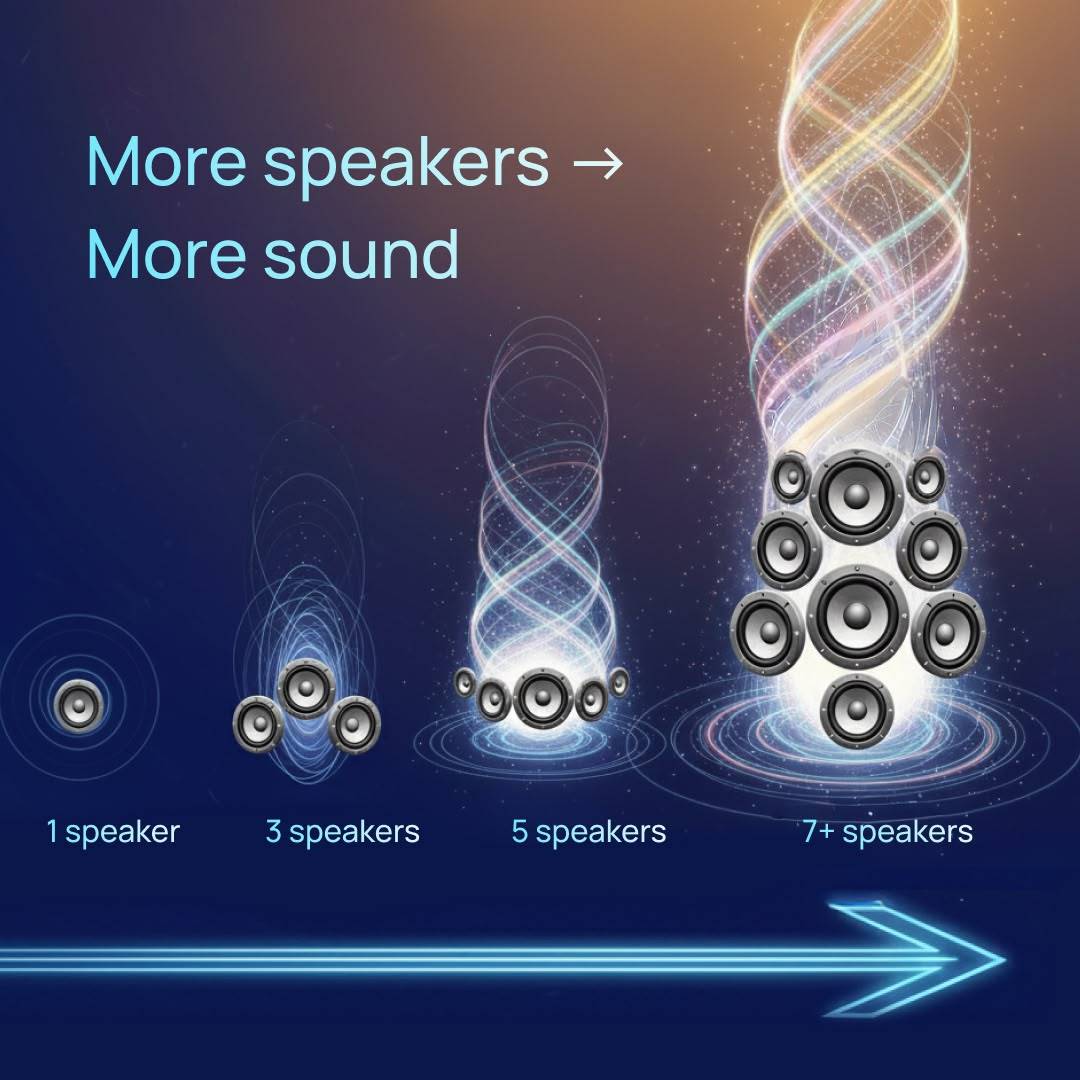
So, what are the specific speaker placement best practices?
Tweeters output a sound that is the most directional out of all the car speakers. What it means is that the sound travels in quite a narrow cone outward, making their location and position crucial. Preferably, tweeters should be mounted at the ear level and directed exactly at the listeners ears.
While the midrange speakers are not as directional as the tweeters, the best approach is to mount them facing the chest of the listener. In our experience, BMW midranges are sometimes mounted too low, at around knee height. Tesla, for example, mounts them in the dash, which results in a comparatively better soundstage. Nothing to worry about as while they could be mounted a little higher, they’re still mounted almost in the optimal position for car interiors.
When it comes to the woofers, the lower it is mounted, the better it will work (at least in theory). BMW usually has them under the seats (which also gives your butt the benefit of some extra rumbles), but in cases like the BMW Z4 and Supra, they are right behind the driver. Some manufacturers have them at the lowest spot on the doors or in the side kick panels near your feet.
Subwoofers are generally found in the trunk for two reasons. One: to utilize the full length of the car, allowing the sub to “fit” as much of the wavelength as possible in the vehicle interior. This makes the bass reflect through the entire cabin and lets it fully develop.
In general we stick to the factory speaker locations and the only changes we ever recommend are adding front tweeters when they weren’t available from the factory and adding a trunk sub if you need it. It’s not worth your time to retrofit D-pillar mids and tweeters if your BMW didn’t have them from the factory.
First, you’ll need to know what BMW sound system you have before you can think about upgrading. While some companies (like us) have services that can decode your VIN and let you know, there are a few things you can look for on your own.
If your BMW was manufactured before 2023–2024, chances are it has one of the following setups.
This is pretty rare for US vehicles, but the base system in most modern BMWs consists of four mids (two in the front and two in the back), and two underseat woofers. Very basic woofers with no power I might add. So, if you don’t see tweeters in your a-pillars and you have no center channel speakers in the dash, there is a good chance you have the base system. HiFi
BMW’s HiFi is probably one of BMW’s most common audio systems, especially if you have a COVID-era vehicle, since BMW had a hard time finding the components for the higher end systems due to the chip shortage. A quick way to tell is if you have the six speakers mentioned before plus tweeters in the A-pillars and a center channel. Some HiFi BMWs also have tweeters in the rear doors like the G01 X3, while some don’t even come with tweeters like the latest G45 X3.
The Harman Kardon system is generally considered to be the first step in the BMW premium sound systems. This is going to give you a few more speakers including the center channel, and usually as many tweeters as midrange speakers. A quick way to tell is you will have a “Harman Kardon” logo on the speaker grilles.
Known as B&O, the Bang and Olufsen system is one of the higher end systems that BMW offers. With this, you’re getting at least 16 speakers, and a well tuned and powerful amp. You’ll know you have this with the distinctive grilles with Bang and Olufsen logos on them, and the iconic center channel tweeter that pops up.
Known as B&W, the Bowers and Wilkins system is generally considered top of the line, but you’ll find people who argue that compared to B&O. Late model BMW’s no longer have B&O systems. Regardless, the new systems known as the Bowers & Wilkins Diamond Surround Sound System featured in the iX have 30 speakers to immerse you in whatever you’re listening to. Yes… 30 speakers. Of course the “lower spec’d" systems generally feature their Diamond Tweeters at least, and have their specially tuned, powerful amp. Oh yes… They also have fancy grilles with Bowers and Wilkins logos on them.
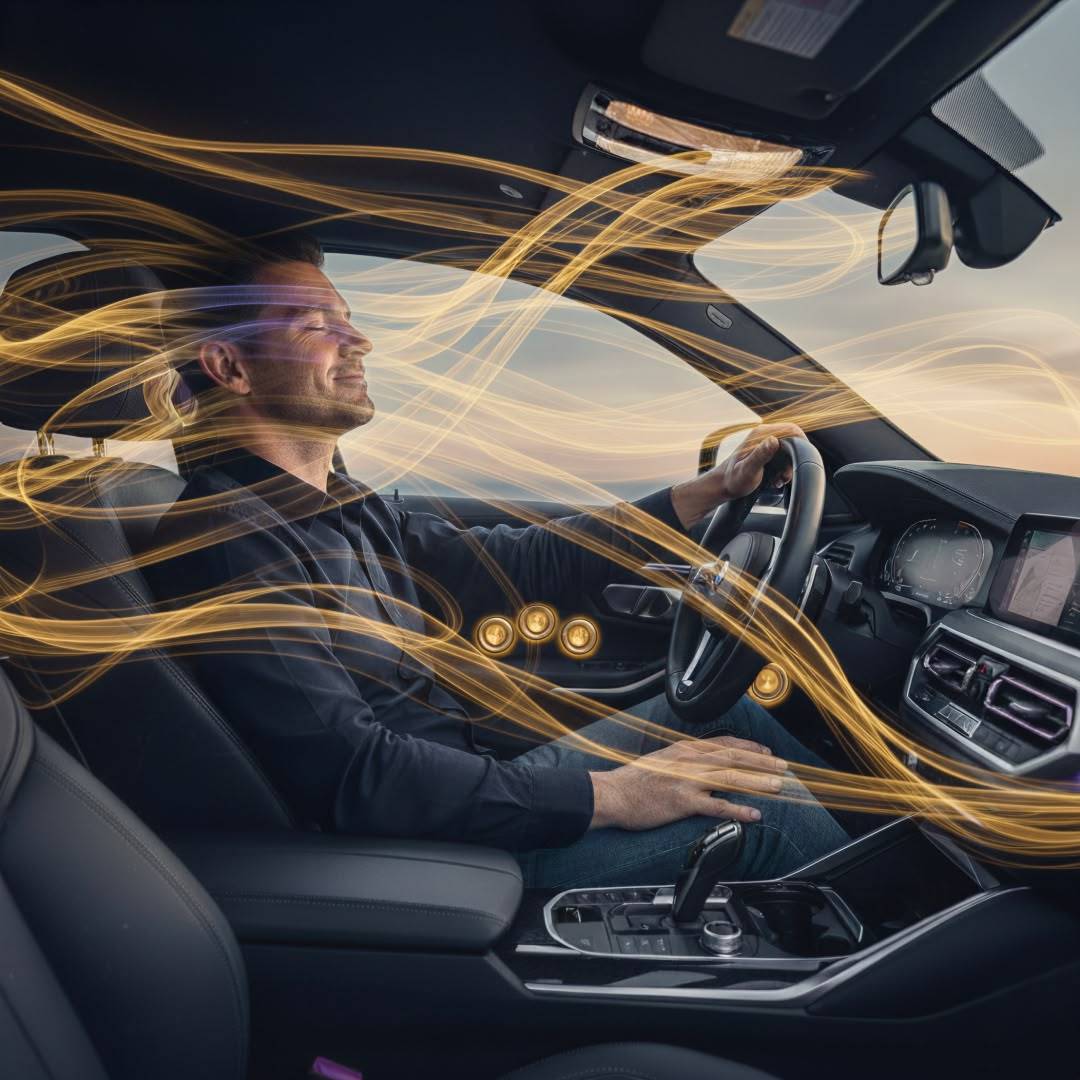 Why should you upgrade?
Why should you upgrade?
You now know the basics of almost everything. You can now point out all of the audio components in your BMW and say what they do, as well as which system you have. So, are they any good? Should you upgrade it? Obviously this is where it becomes subjective, but since you ARE here, you’re probably looking for a little something more.
Keep in mind the following: regardless of which system you have, you’ll want to pair the amp with the speakers you get. Even if you plan on getting pieces bit by bit to keep the initial cost down, you’ll need to plan ahead.
Let’s be real… If you have the Base system, you practically have to upgrade. They basically have little power, wimpy speakers and no tweeters. Late model base systems are simple to upgrade with an amp and harness kit. Older 5+ year old base systems need some extra wiring added – all of which we supply. Along with the amp you should upgrade speakers too, as upgrading just the amp on a base system is unfortunately of little help. You might need new trim panels with grilles in them for the tweeters – whenever that’s required we list the part numbers on our website and can assist sourcing them too.
If you have the HiFi system in your BMW, it can sound rather good. However, you did not get a BMW for rather good. You got a BMW because you want the best. If you just listen to talk radio or nothing over about 50% of the way up the volume knob, you’re fine. However, if you like to actually feel the music you’re listening to, you’ll run into the fatal flaw of the HiFi system: digital limitation.
For whatever reason, the audio in these systems will hit a wall and start distorting. Even if you crank it up, sure the volume will get louder, but you’re just smacking MORE signal into that wall. What a HiFi system will really benefit from is an amp upgrade. A properly tuned amp will send cleaner signal to the speakers, and the only limitation will then come from the physical limitation of the speakers. If you REALLY crank it up, then look at speakers. Speaker upgrades are not only about brute force power handling though, the extra quality of sound reproduction is equally important. For both the B&O and B&W systems, this will really come down to carefully determined needs. They are both very good systems. The amps are powerful and tuned well, and the speakers are strong and handle a lot. We haven’t yet ventured into upgrading those systems but they are on the schedule for the future.
If you do decide to upgrade, there are plenty of ways to do so. When it comes to choosing your components, you can go the plug-and-play route or not. Plug-and-play means each upgraded speaker will fit in the factory location and plug into the factory harness. The same with the amp, at least with the harness.
Thankfully you drive a BMW (or BMW Group branded vehicle) and these are very popular. There are many companies that make gear that will take minimal skill to install. However, if you want to truly get custom and if you’re good with cutting, splicing, and soldering, there is almost no limit to which parts you can piece together.
Just make sure regardless of which route you go that your amp doesn’t overpower your speakers, and your speakers don’t draw more power than your amp can supply.
Since we’re wrapping things up here, we have to mention the best plug-and-play system for your BMW, MINI, or Supra: Alpha One. Our brand offers three amps that cover the different head units and factory systems over the years, as well as a far more rugged and clear speakers for each channel.
Just about all Alpha One Amps have custom mounting brackets to make installation simple and each amp is tuned for your ears and the music you listen to based on a questionnaire you fill out during your order.
Need even more? The Alpha One SUB10 Trunk Sub will round everything out and is 100% compatible with the Alpha One amps. Honestly, if you want the best aftermarket system, look no further than Alpha One.
The world of BMW audio can be one of the most immersive systems you’ve ever heard to just complete junk. However, now you know what the parts are, how they work, and how to upgrade your system to what you truly want your BMW to sound like. THAT is the beauty of custom audio. Your ears are like no one else’s, so why settle for a system made for everyone?
We hope you found this article helpful! Don’t forget to check out our YouTube channel for other helpful maintenance and DIY focused videos for Tesla, BMW, MINI, and Supra.
Source/input device, DSP and amp combo (in Alpha One BMW Amplifier Upgrades), cabling/wiring, and speakers in that order.
For models produced before 2023–2024, there are the following options. Base (6 speakers, system with poor quality speakers and no tweeters). HiFi (mids, tweeters, and underseat woofers). Harman Kardon (upgraded amp and speakers, generally more speakers than HiFi). Bang and Olufsen (powerful amp and at least 16 speakers). Bowers and Wilkins (powerful amp and up to 30 speakers).
The base system arguably does not, but the rest all have their merits. In most cases, the HiFI and Harman Kardon systems suffer at high volumes with distortion and lack of clarity.
If you really want to “feel” the low end in your music, a properly tuned trunk sub could really help.
While even the plug and play systems require you to take off a lot of interior trim and panels, it’s far easier compared to system components that require cutting, splicing, and soldering. You still have to take off all of the panels, and THEN do all that too. Either system takes time: one just takes far more, and requires far more skill.
Customer Reviews
Comments
Rate the product
This email is already registered.
Please Log In to continue.
Categories:
[[cat.label]] ([[cat.data.length]])Popular posts:
Newsletter
Let us find
the right version for you
We'll confirm pricing, compatibility and product details for your car:
Enter your VINSource/input device, DSP and amp combo (in Alpha One BMW Amplifier Upgrades), cabling/wiring, and speakers in that order.
For models produced before 2023–2024, there are the following options. Base (6 speakers, system with poor quality speakers and no tweeters). HiFi (mids, tweeters, and underseat woofers). Harman Kardon (upgraded amp and speakers, generally more speakers than HiFi). Bang and Olufsen (powerful amp and at least 16 speakers). Bowers and Wilkins (powerful amp and up to 30 speakers).
The base system arguably does not, but the rest all have their merits. In most cases, the HiFI and Harman Kardon systems suffer at high volumes with distortion and lack of clarity.
If you really want to “feel” the low end in your music, a properly tuned trunk sub could really help.
While even the plug and play systems require you to take off a lot of interior trim and panels, it’s far easier compared to system components that require cutting, splicing, and soldering. You still have to take off all of the panels, and THEN do all that too. Either system takes time: one just takes far more, and requires far more skill.
Customer Reviews
Comments
Rate the product
This email is already registered.
Please Log In to continue.
[[comment.name]]
[[comment.text|raw]]
BimmerTech
Newsletter
[[comment.name]]
[[comment.text|raw]]
BimmerTech